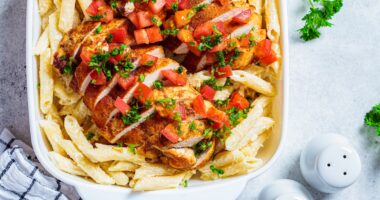
Ever woken up to the soft rumble of a thunderstorm and a that-wasn’t-there-last-night ache in your knees or wrists? If you’ve been diagnosed with arthritis—an umbrella term for conditions that affect the joints, such as osteoarthritis, rheumatoid arthritis, and psoriatic arthritis—the answer is likely yes. And when this happens, there’s a good chance you’ve asked yourself, “Does weather affect arthritis?” Or, maybe you’re already familiar with how weather changes affect your pain levels. But what exactly does the science say?
Well, according to 2015 research published in The Journal of Rheumatology, there is a relationship between joint pain and weather changes in many people with arthritis.1 However, this relationship is multi-faceted, and isn’t as simple as saying one type of weather makes arthritis pain worse. In fact, there are a few weather-related factors that could be to blame for an increase in your arthritis symptoms.
Ahead, we’ll explore how various weather conditions and changes can affect arthritis pain, as well as how to handle weather-related joint pain if it strikes.
How do changes in weather affect arthritis?
It’s not just that weather can affect arthritis, it’s the change in weather that can trigger symptoms. Differences in temperature (changes from warm to cold), precipitation (particularly cold, rainy weather), and increasing humidity (both when it’s cold and hot) all seem to play the most significant role in setting off aches and pains.
In that same 2015 study published in The Journal of Rheumatology, more than 800 participants with osteoarthritis were asked to record their pain levels over the course of a year using two-week pain calendars. Participants reported experiencing the most pain when the weather was rainy or increasingly humid—especially when the temperature outside was colder than usual.1
Since arthritis triggers aren’t the same for everyone, it’s always a good idea to keep note of how certain weather conditions and weather changes affect your pain levels. Then, you can talk with your doctor about a treatment plan that takes weather changes into consideration.
What kind of weather makes arthritis worse?
READ RELATED: Mark on Lanarkshire woman's face turned to skin cancer after she waited FIVE years to see doctor
While research on the link between arthritis and weather is still limited, current studies suggest that there are a few different weather patterns that can have a worsening effect on arthritis pain.
Cold temperatures with high humidity
Lower temperatures during colder months are often reported to be a cause of increased joint pain in people with arthritis. “Generalized joint pain, more specifically in the knees, is a common complaint that we hear during fall and winter seasons,” Lauren Farrell, MSPT, a physical therapist and clinic director of Professional Physical Therapy in Hoboken, New Jersey, tells SELF.
But what is it about the colder months that seems to aggravate arthritis pain? One 2020 study published in Pain Research and Management suggests that, surprisingly, an increase in humidity levels may be to blame. In this particular study, self-reported joint tenderness and pain in participants with rheumatoid arthritis (R.A.) were directly connected to increased humidity levels during winter.2
You might not associate humidity with teeth-chattering weather (tropical rainforests typically come to mind), but an increase in humidity can actually make frigid temperatures feel even colder. This, in part, explains why people with arthritis might notice more pain during those damp, cold days associated with the Southeastern areas of the United States, as opposed to dry, cold weather in the Southwest. However, experts also believe that this increased pain might have to do with the way that blood flows through the body when we’re cold.
“The research suggests that in colder weather, the body will conserve heat, and it will send more of the blood to the organs in the center of the body, like the heart or the lungs,” Armin Tehrany, MD, orthopedic surgeon and founder of Manhattan Orthopedic Care, tells SELF. “So, when that happens, the arms, legs, shoulders, knee joints—those blood vessels will constrict,” he says. Less blood flow makes those areas colder and stiffer, which can cause discomfort and pain in people with arthritis.
Another theory about why the cold seems to trigger those aches and pains? Cold air can make our muscles and ligaments tense up, leading to more stiffness and pain in the joints, according ot the Cleveland Clinic.
Rain and barometric pressure in warmer months
Winter isn’t the only season that can cause a flare-up of arthritis symptoms, though. For some people, changes in temperature, rain levels, and even air pressure during the spring and summer months can cause increased joint tenderness and pain, too.
Source: SELF









